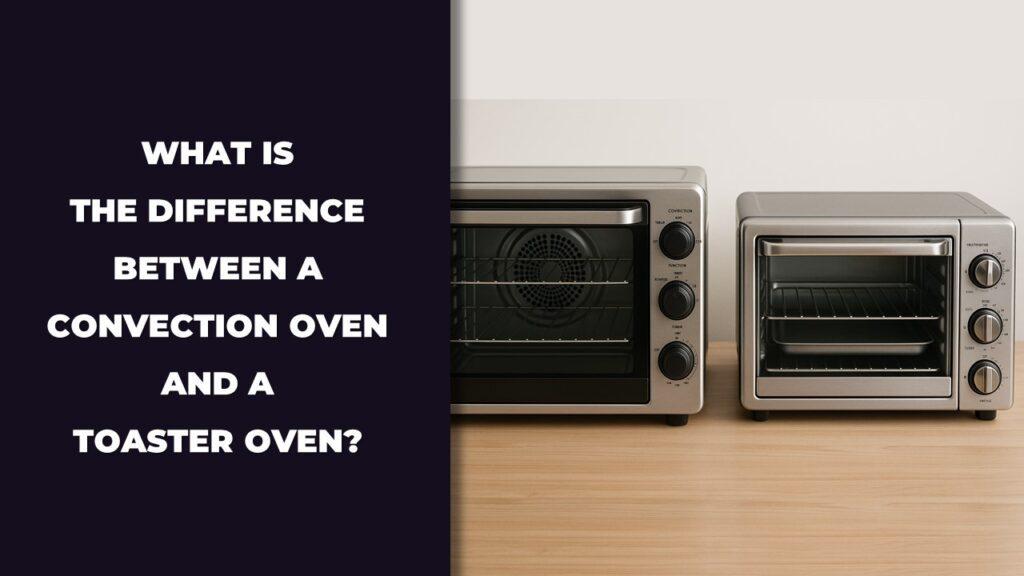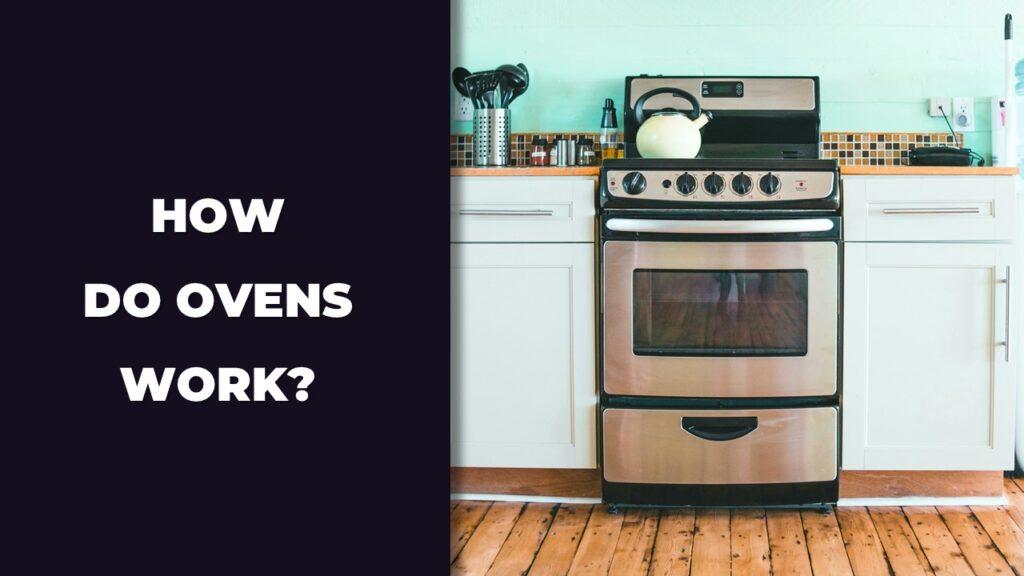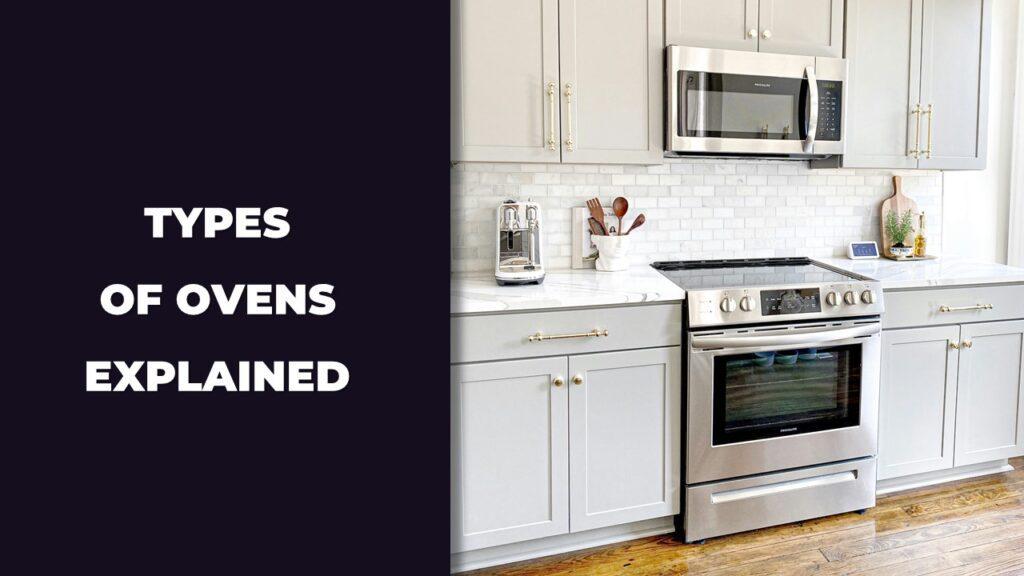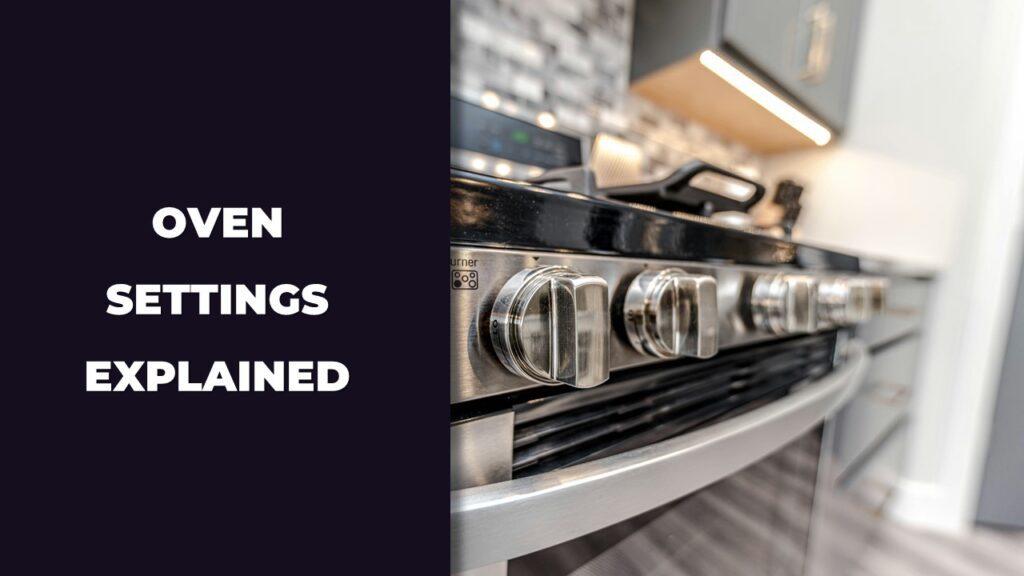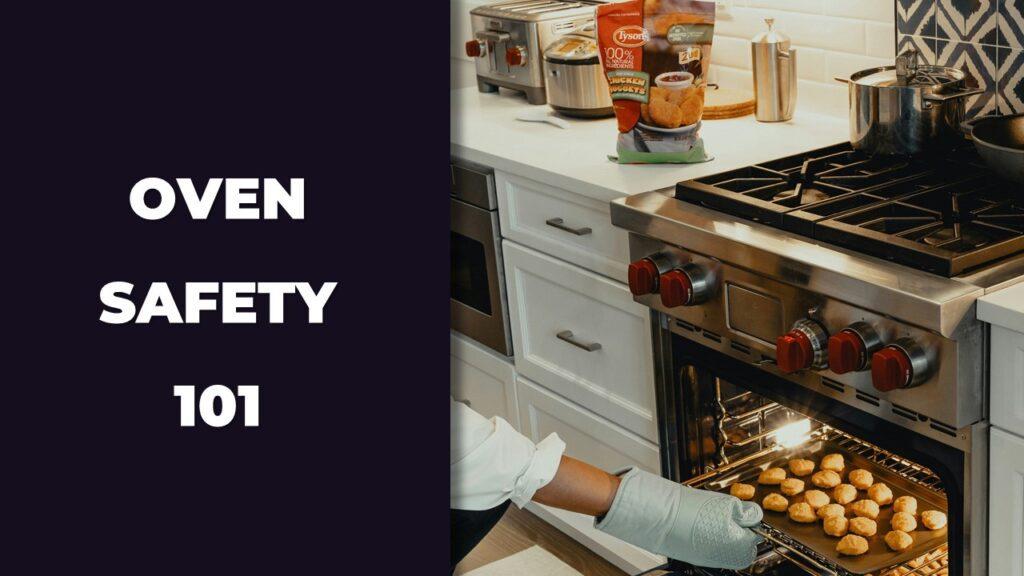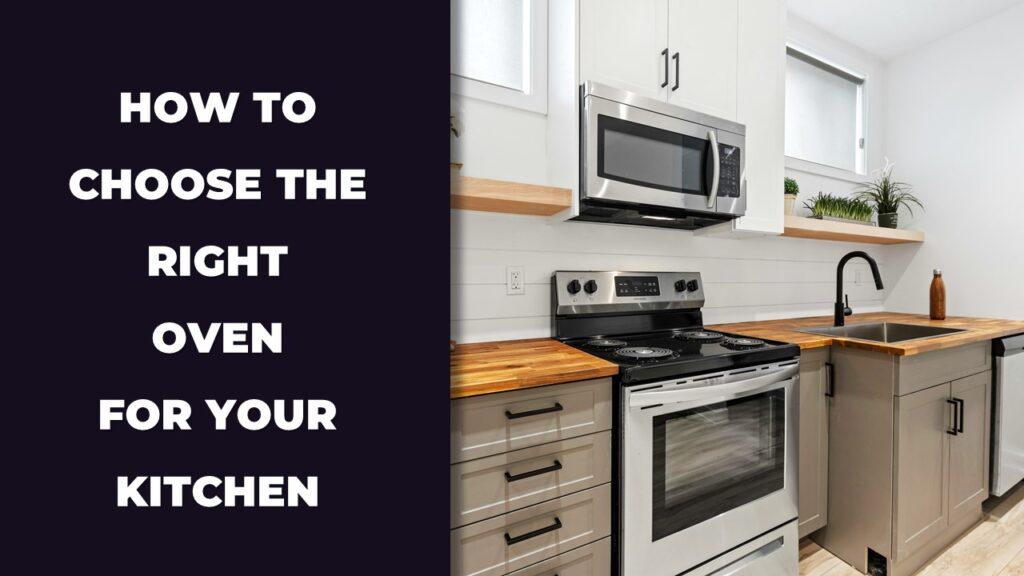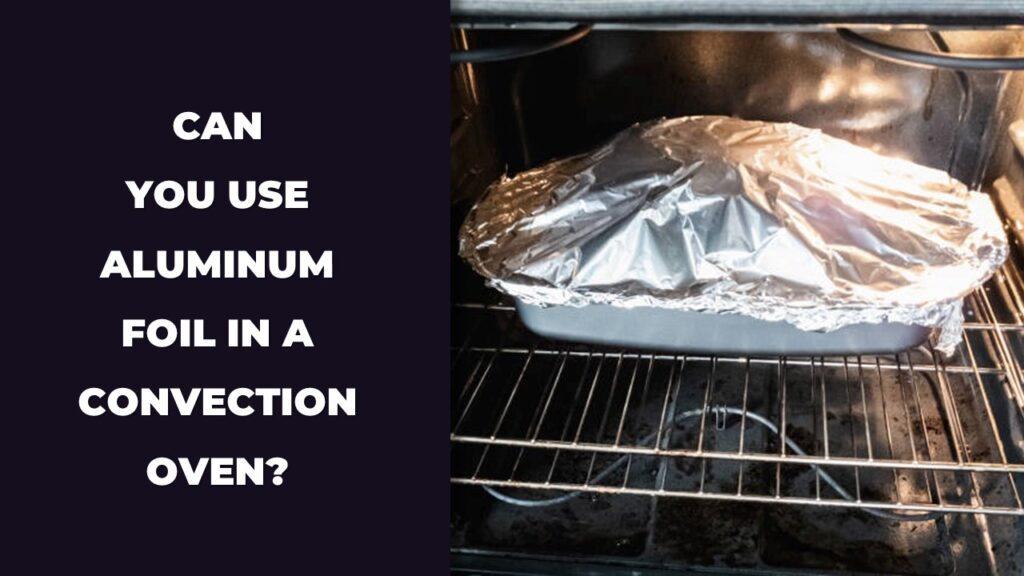
Yes, you can use aluminum foil in a convection oven, but you need to be careful. It’s safe for wrapping food, covering dishes, or lining baking trays—as long as you don’t block airflow or let the foil touch the oven’s fan or heating elements. These small details can make a big difference in how your food turns out and how safe your oven stays.
In this article, we’re going to walk you through the dos and don’ts of using foil in a convection oven. We’ll cover safe ways to use it, what to avoid, common mistakes people make, and smart alternatives you can try instead.
ChatGPT said:
Is It Safe To Use Aluminum Foil In A Convection Oven?
Yes, it is generally safe to use aluminum foil in a convection oven, but you need to follow some basic safety rules. The foil should never block the fan or vents, and it must not touch the oven’s heating elements. Used correctly, it can help with even cooking, moisture retention, and easy cleanup.
The biggest concern with aluminum foil in a convection oven is airflow. Convection ovens rely on circulating hot air to cook food evenly. If you cover racks with foil or wrap food too tightly, you can block that air movement. That leads to uneven cooking or hot spots that might dry out or even burn parts of your meal.
Another risk is letting foil touch heating elements. If it makes contact, it can spark or even melt, which is dangerous and can damage the oven. Stick to using foil on baking sheets or wrapped snugly around food. And always double-check your oven manual, since some brands have specific rules about using foil.
How A Convection Oven Works (And Why Airflow Matters)
A convection oven works by using a built-in fan to blow hot air around the food, which helps it cook faster and more evenly. That circulating air is the key difference between a convection oven and a regular one. It also means that anything blocking the airflow—like misplaced foil—can mess up how your food cooks.
Unlike traditional ovens that heat mainly from the bottom or top, a convection oven keeps the hot air constantly moving. This makes it great for roasting meats, baking cookies, or getting crispy edges on casseroles. But it also means the oven is more sensitive to how things are arranged inside.
If aluminum foil blocks the vents or covers too much of the rack, it disrupts that airflow. The oven may end up cooking unevenly or overheating in certain spots. You might notice burnt edges or undercooked centers, especially in baked goods or large dishes.
This is why many manufacturers warn against lining the oven floor or covering the racks completely with foil. It’s not just about heat—it’s about how that heat moves. Using foil the wrong way doesn’t just affect your food. It can shorten the oven’s life or even lead to dangerous situations like sparking or smoke.
Safe Ways To Use Aluminum Foil In A Convection Oven
Yes, you can safely use aluminum foil in a convection oven—as long as you don’t block airflow, cover vents, or let it touch the heating elements. It works well for covering dishes, wrapping food, and lining pans, but only if you use it properly.
Aluminum foil can help control how food cooks in a convection oven. From trapping moisture in fish fillets to stopping the tops of casseroles from burning, it’s a handy tool. Just make sure the foil stays in place and doesn’t block the oven’s fan or vent system.
Let’s walk through the safest ways to use it inside your convection oven:
Covering Food To Prevent Over-Browning
One of the most common uses for foil is to lightly cover food that’s browning too fast. For example, if the top of your lasagna is getting too dark before the inside finishes cooking, a loose foil tent can slow the browning without affecting the airflow too much.
Make sure the foil is not tightly sealed around the entire dish. Keep the cover loose and allow space for air to move around. This way, you still get the benefits of convection cooking without overdoing the color or crust on top.
Wrapping Food For Moisture Retention
Wrapping food tightly in foil is a great way to lock in juices and prevent dryness. Think baked potatoes, fish, chicken breasts, or foil-pack vegetables. These are perfect for convection ovens because the even airflow surrounds the packet and cooks everything inside gently and thoroughly.
Just be sure the wrapped foil packets are placed on a tray, not directly on the oven rack. That keeps them from tipping, leaking, or blocking any airflow below.
Lining Baking Sheets (Without Blocking Vents)
You can also line a baking tray or sheet with foil to catch drips or make cleanup easier. This works especially well for roasting vegetables or baking cookies. But it’s important not to fold the foil up around the edges in a way that traps air or creates a barrier.
Avoid covering the entire rack with foil, and never let the foil hang off the sides of your tray. Always leave space around the edges so hot air can move freely.
Unsafe Aluminum Foil Practices In Convection Ovens
While aluminum foil can be helpful, there are also ways it can go very wrong inside a convection oven. Blocking airflow, touching the heating elements, or lining the oven bottom with foil can all lead to uneven cooking, equipment damage, or even fire risk.
Some of these mistakes are surprisingly common, especially for people who are used to cooking in traditional ovens. Convection ovens work differently, so you have to be a bit more mindful of how you use foil.
Let’s break down what not to do:
Blocking The Fan Or Ventilation Pathways
The fan in a convection oven keeps hot air moving. If foil blocks the vents or covers part of the airflow path, it disrupts the oven’s ability to cook food evenly. You might notice that some parts of the dish are burnt while others stay undercooked.
Avoid laying foil in the back of the oven or wrapping dishes in a way that covers vent holes. Always check where the fan is and keep that area clear.
Letting Foil Touch Heating Elements Or Walls
If foil comes in contact with a heating element, it can spark, burn, or even melt. This not only damages the foil and the food—it can damage your oven or create a fire hazard. It also poses a safety risk if you open the oven mid-cook and get hit with smoke or melted foil fumes.
Keep foil at a safe distance from the top and bottom of the oven. Always place it on a pan or around food, never free-floating or touching any surfaces directly.
Lining The Oven Bottom With Foil
Many people try to catch drips by lining the bottom of their oven with foil. This is one of the riskiest things you can do, especially in a convection oven. Foil on the bottom can reflect heat, trap it, or melt onto the surface, causing permanent damage.
Instead, place a foil-lined tray on the rack below your food if you’re worried about spills. That way, the oven floor stays clean, and the airflow remains unaffected.
Special Tips For Using Foil In A Convection Oven
When using foil in a convection oven, small adjustments make a big difference. Secure the foil, use the right type, and avoid mixing it with certain foods. These steps help you cook safely without messing up airflow or damaging your oven.
Many problems with foil happen not because foil is bad, but because it’s used carelessly. Loose pieces, cheap material, or the wrong food combinations can lead to uneven cooking or a smoky mess. These tips can help you sidestep those common slip-ups and cook with confidence.
Let’s look at a few simple ways to get it right.
Secure The Foil Edges
Loose foil is a problem in a convection oven because the fan blows hot air forcefully. If the foil isn’t tightly tucked or weighed down, it can flap around or even fly into the fan. That’s how you end up with burnt edges, noise, or foil pieces melting onto your food.
Always press the foil firmly against the pan or dish. If you’re covering something loosely, crimp the edges to keep it from lifting. You can also place a small oven-safe dish on a corner if it keeps trying to lift up mid-cook.
Choose Heavy-Duty Foil
Not all foil is created equal. Standard or thin foil tears easily and doesn’t hold shape well under high airflow. Heavy-duty foil is stronger and stays in place better, even when the fan kicks in.
It also provides a better barrier when wrapping food and is less likely to leak, tear, or fold into your food during cooking. If you cook in your convection oven often, keep a roll of heavy-duty foil on hand. It’s worth it.
Avoid Foil With Acidic Or High-Fat Foods
Tomatoes, citrus, vinegar, and other acidic ingredients can react with aluminum. This doesn’t just affect the flavor—it can cause the foil to break down and leave black spots or a metallic taste in your food.
High-fat foods like bacon or greasy roasts can cause foil to drip or even catch fire at very high temps if grease pools up. If you’re cooking something oily or acidic, use parchment paper or an oven-safe dish instead of foil to be safe.
Common Oven Mistakes People Make With Aluminum Foil
Many people use foil in ways that seem helpful but actually cause more harm than good. Overcrowding, poor placement, and using damaged foil can all create problems with heat circulation, safety, and even food quality.
These mistakes often come from habits picked up using regular ovens or toaster ovens. But convection ovens work differently. You have to think about air movement, heat balance, and how foil affects both.
Here are some common foil missteps to watch for:
Overcrowding The Oven
Stuffing your oven with too many trays or dishes can block airflow and cancel out the convection effect. It’s even worse if some of those dishes are wrapped in foil or sitting on foil-lined trays that block heat from circulating.
Leave space between each item, especially around the sides and back of the oven. This helps your food cook evenly and prevents steam from getting trapped and making things soggy.
Covering All Racks With Foil
It might seem like a good idea to line the entire rack with foil to catch drips, but this is one of the quickest ways to ruin your meal—or your oven. When you cover a rack completely, hot air can’t pass through it.
That means uneven heating, long cook times, or burnt edges with raw centers. Always place foil on a tray or under a dish, never across the entire rack. Let the oven breathe.
Using Loose Foil Or Torn Pieces
Torn foil pieces can blow around inside the oven. If they land on the fan or heating element, they can spark, burn, or melt. This is especially true with tiny leftover scraps from wrapping food.
If you notice a ripped piece of foil, replace it before cooking. Don’t patch it or let it hang loose. Keep the foil smooth, secured, and away from moving parts. It’s a simple habit that keeps your oven working right and your food safe.
What Do Oven Manufacturers Recommend?
Most oven manufacturers say it’s okay to use aluminum foil in convection ovens, but only if you follow a few key safety steps. The biggest warning is to never line the bottom of the oven or block airflow, as that can lead to uneven cooking or damage.
Each oven brand has its own advice, so always check your model’s manual. But in general, here’s what most manufacturers suggest:
- Don’t Line the Oven Floor: Foil on the bottom can trap heat and damage the interior or heating elements.
- Keep Foil Away From the Fan and Vents: Blocking these can disrupt airflow and lead to poor cooking results.
- Use Foil on Racks or Trays Only: It’s safer to line a baking sheet than to cover a rack or interior surface.
- Use Heavy-Duty Foil for Cooking: Thin foil tears easily and can shift during convection cooking.
- Avoid Wrapping Oven Racks: Covering racks fully in foil blocks circulation and affects how the oven heats.
If your oven has special convection settings, your manual might also list temperature adjustments or fan recommendations when using foil.
Alternative Options To Aluminum Foil In Convection Ovens
If you want to avoid using aluminum foil in your convection oven, there are plenty of smart alternatives. These options can help you cook, bake, and keep things clean without interfering with airflow or damaging your oven.
Here are some safe and reusable alternatives to consider:
- Parchment Paper: Great for baking cookies, roasting vegetables, or lining trays. Just check the max temperature (usually around 425°F).
- Silicone Baking Mats: Reusable and non-stick, they fit perfectly on sheet pans and allow hot air to circulate freely.
- Oven-Safe Lids: Use oven-safe glass or metal lids to cover dishes instead of foil for moisture retention.
- Drip Trays: Place a baking tray on the rack below your food to catch spills instead of lining the oven bottom with foil.
- Oven Liners (If Approved): Some ovens allow silicone or Teflon liners, but only if placed on racks, not the bottom.
Each option has its strengths, and many are easier to clean and more environmentally friendly than foil.
Aluminum Foil In Convection Microwave Ovens
You can use aluminum foil in a convection microwave oven, but only when it’s running in convection mode—not microwave mode. In microwave mode, metal causes sparks and can damage the appliance. But when using the convection setting, foil works just like it would in a regular convection oven, as long as it doesn’t block airflow or touch the interior walls.
Before using foil in any convection microwave, read your user manual to see what’s allowed. Some brands limit foil use or suggest specific shapes and sizes.
Here’s a quick breakdown:
| Mode | Can You Use Aluminum Foil? | Notes |
| Microwave Only | No | Foil can spark and damage the microwave. |
| Convection Mode | Yes (With Caution) | Safe if foil doesn’t touch walls, fan, or heating elements. |
| Grill Mode | Depends on Brand | Some allow foil; others warn against it. Check the manual. |
| Combo (Microwave + Convection) | No | Never use foil when microwave energy is active. |
When in doubt, stick to convection-only use, and always place foil securely on trays or wrapped around food, not loose or floating.
Final Thoughts
Yes, you can use aluminum foil in a convection oven, but it needs to be done carefully. Foil works well for wrapping food, covering dishes, or lining trays, but only if you keep it away from the heating elements, fan, and vents. The key is making sure the airflow stays smooth so your food cooks evenly.
If used the wrong way, foil can lead to problems like uneven cooking, poor browning, or even a fire hazard. Avoid lining the oven bottom or covering racks completely. Stick to safe habits like using heavy-duty foil, securing loose edges, and avoiding acidic or greasy foods when possible.
In short, aluminum foil is a helpful tool—but only when it’s used the right way. Follow your oven manufacturer’s guidelines, stay alert to airflow, and think twice before placing foil just anywhere inside your convection oven.
Related FAQs
Can You Put Foil Directly On A Convection Oven Rack?
No, placing foil directly on the rack can block airflow and cause uneven cooking. Use a tray instead.
Is It Safe To Wrap Meat In Foil In A Convection Oven?
Yes, wrapping meat in foil helps retain moisture and works well in convection ovens when placed on a baking tray.
Will Foil Affect Air Circulation In Convection Ovens?
Yes, if foil blocks vents or fans, it can disrupt airflow and lead to hot spots or undercooked food.
Is It OK To Use Foil In Toaster Or Countertop Convection Ovens?
Yes, but only if the foil doesn’t touch heating elements or the walls. Check the manufacturer’s manual to be safe.
What Happens If Foil Touches The Fan Or Heating Element?
Foil can spark, melt, or even catch fire if it touches heating elements or the fan. Always keep it clear of those parts.
What Temperature Is Too High For Aluminum Foil In Ovens?
Aluminum foil is safe up to around 500°F. Avoid broiling or using foil near exposed high-heat elements at very high temps.
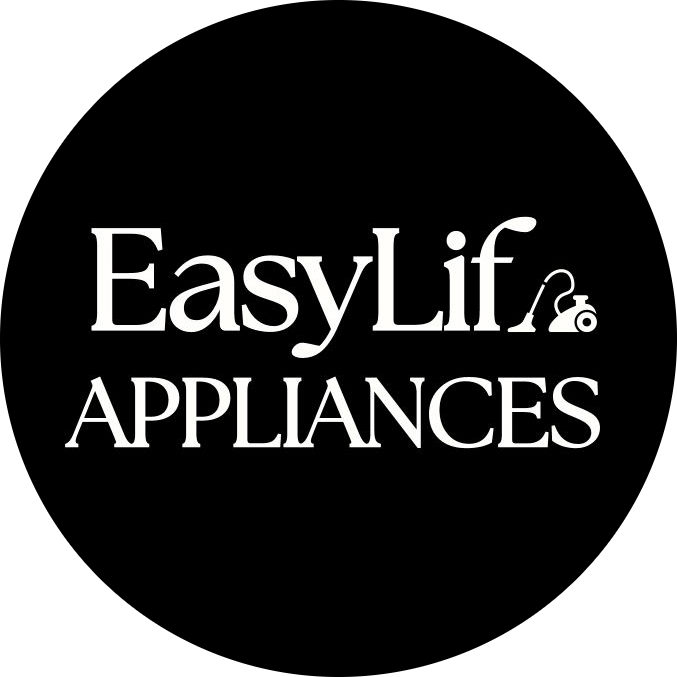
At our core, we’re a group of passionate households and gardening tools and appliances users and enthusiasts. We dive deep into the world of tech, especially when it’s about your household or gardening electric items. We try to provide as much value to the readers with our information and how to blog articles as possible. For affiliate articles our honest and transparent reviews of essential tech products are rooted in real-world experience. We take great satisfaction in offering unbiased evaluations, ensuring that you can make informed decisions when investing in your desired techs.

